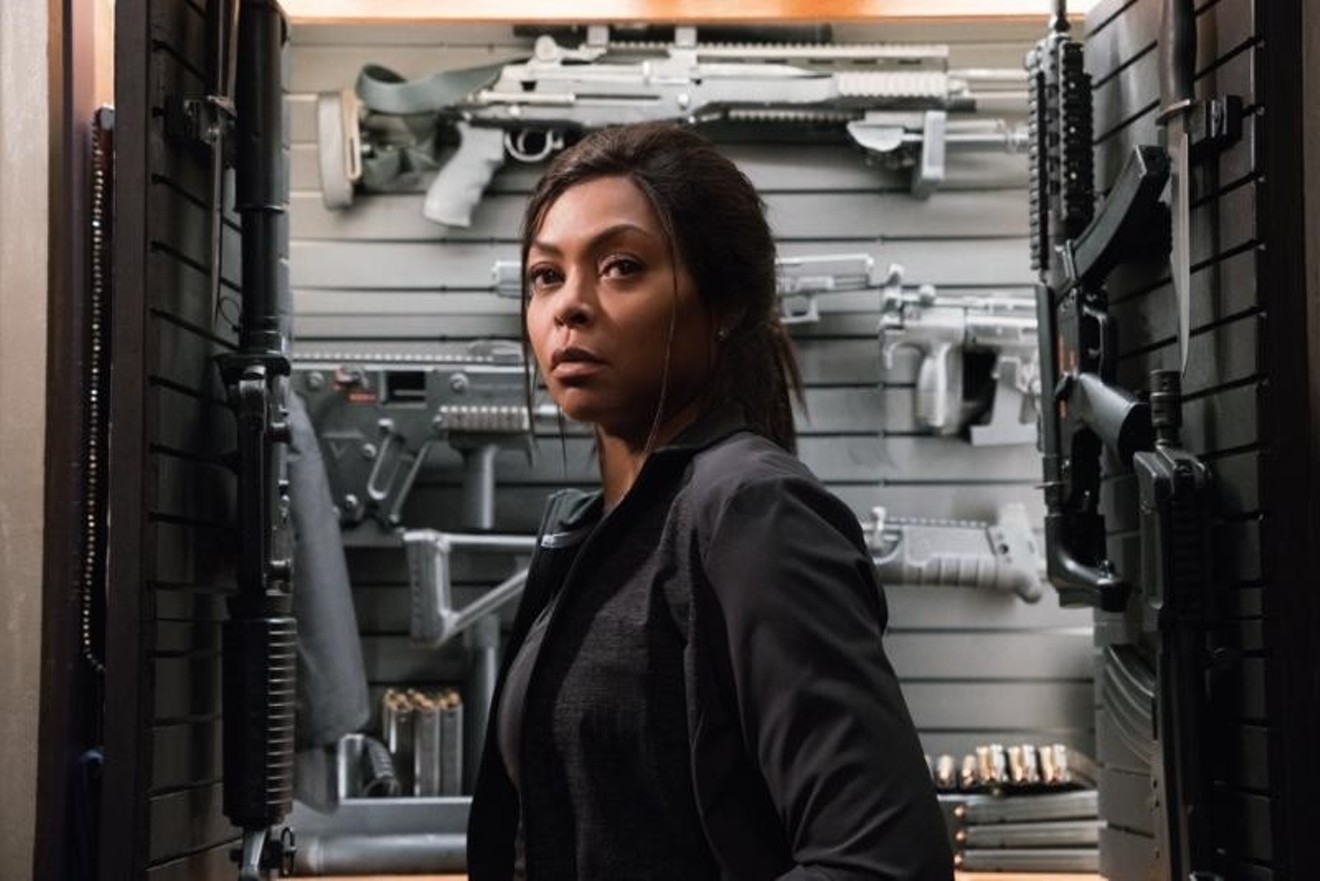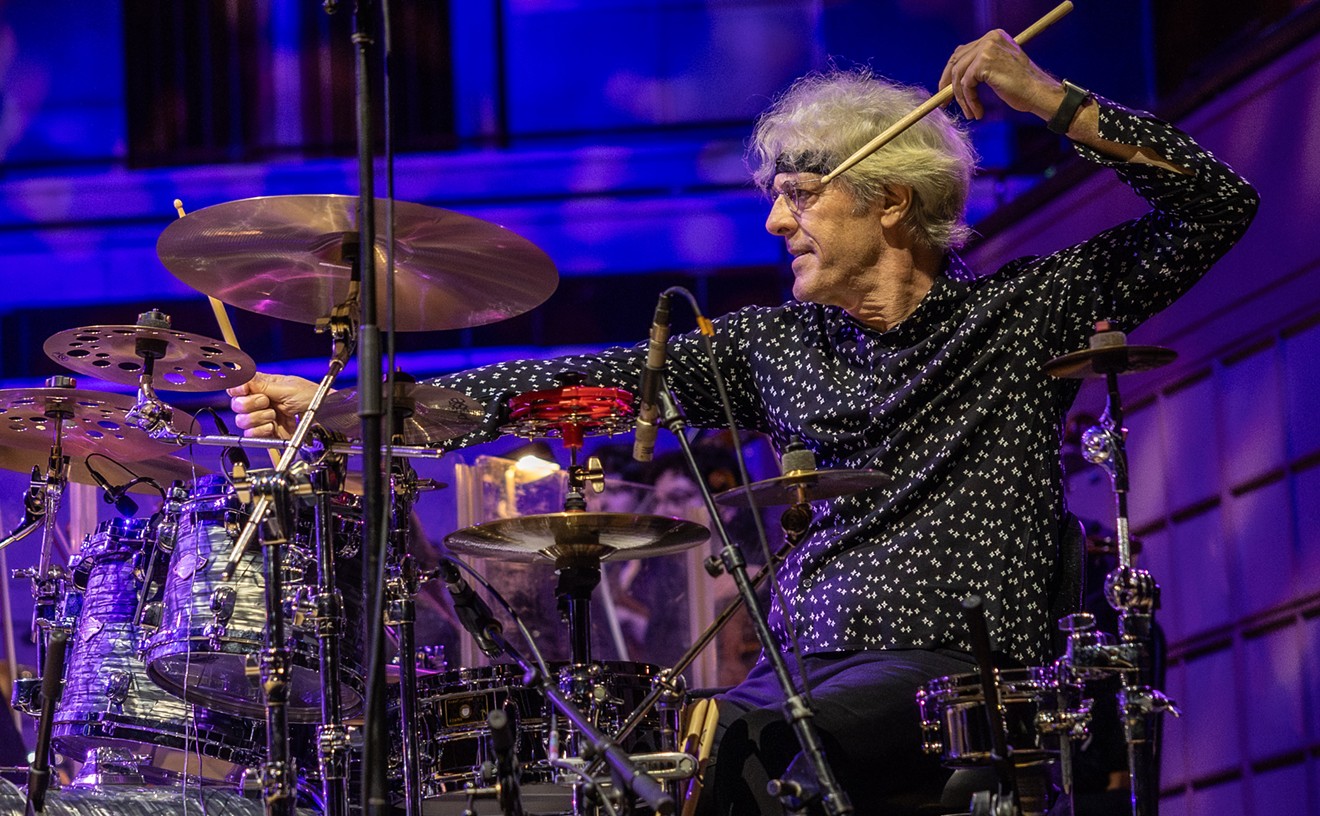Laustsen is a likely Academy Awards contender for his work on Guillermo del Toro’s The Shape of Water, wherein he infuses even the dankest of scenes with a lightness and charming artificiality, as though the film were playing out on an old-timey soundstage set. Here, he employs an artful use of natural light, as though it’s always mid-afternoon on a slightly cloudy fall day. Henson’s face is often a quarter in shadow, but her eyes — her greatest tool for conveying emotion — are always dramatically lit. This makes it even more unfortunate that director Babak Najafi (London Has Fallen) doesn’t allow the camera to linger on her face for too long without dialogue. It’s as though he sees little value in the moments between words. Compare that approach with the John Wick franchise, Proud Mary’s closest cousin. Robert Alonzo’s stunt choreography feels inspired by the blunt but graceful fighting style Chad Stahelski and David Leitch developed for Keanu Reeves in the Wick films, and you’ll see how far even the occasional extra three seconds of dialogue-free reaction can enrich and deepen a sparse script. Najafi’s insistence that the narrative barrel on is at odds with Laustsen’s careful framing.
In one scene, Mary has taken Danny home and instructed him to take off his shirt to get bandaged. The bathroom is a combo of steel and navy blue, conveying strength, while a silken Japanese robe hangs splayed on the wall as decoration — confidence belied by a vulnerability and softness. Laustsen places the tough-talking boy in the foreground, as he reveals lesions and bruises all over his back. Then light filters in through horizontal venetian blinds, hitting the boy’s scars and open wounds. That one shot contains layers upon layers of visual meaning. But then Najafi and his editing team cut to Mary and then pull away too quickly to register how she’s processing this boy’s trauma — what it means to her.
That element of the storyline reeks of a familiar trope — female action leads find themselves laden with child-rearing duties and for some reason immediately take to the job.
tweet this
I know some readers will be skimming through this, wondering why I care so much about these small dramatic moments in a shoot-’em-up-use-the-bad-guy’s-body-as-a-bullet-shield kind of film. Filmmakers doing the little extra work of setting up a protagonist’s intentions early on reaps rewards. It gives the audience the luxury of not having to try to work out what we care about and why during the fight scenes. Think: John Wick’s agonized grieving of his wife and dog, how succinctly that’s revealed as early as possible.
That said, Proud Mary offers far too few action sequences. Still, Alonzo and Najafi manage to create one incredibly thrilling final fight, the first time in the film it seems like every department is in sync. You can tell sometimes, watching a movie, when the people behind the scenes were truly fired up to make something. That energy pulses onscreen. In this finale, Henson is a ball of muscle and instinct, a powerhouse assassin every bit the direct descendant of Pam Grier and Marlene Clark. But that only comes after 80 minutes of being told Mary is a top-notch killer but never quite shown her skill.
Perhaps there would have been more time for exploring Mary’s character, motivation, strength training and prowess if the narrative didn’t skew so heavily to the experience of that 12-year-old boy and Mary’s new identity as a mother. That element of the storyline reeks of a familiar trope — female action leads find themselves laden with child-rearing duties and for some reason immediately take to the job. Aliens saddles Ellen Ripley with a little girl. Both the Species and early Terminator movies revolve around motherhood. Even Joanne Whalley’s Sorsha in Willow must relent to parenting. It’s fascinating that the most-known instance in film of a male killer taking in a child is Luc Besson’s Leon: The Professional, wherein a girl who is the same age as Danny in Proud Mary is seen as her new male caretaker’s potential sex object. I wonder if three men hadn’t have written this script if Mary could just be proud — and not also motherly.











